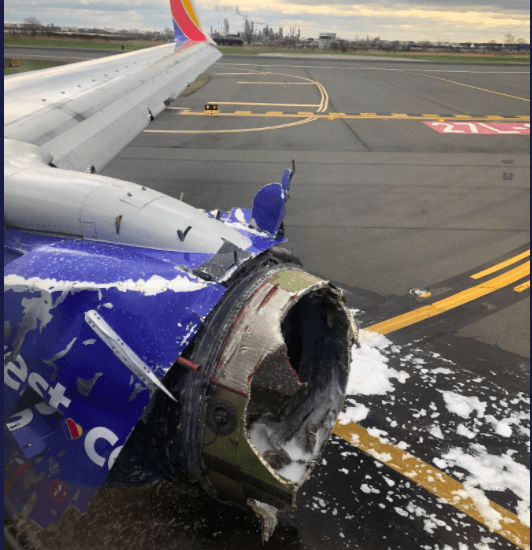When you fly these days do you even notice the pilot? You’re delayed, on your phone or otherwise preoccupied as you make you way down the aisle to that roomy economy seat. If you do glance into the cockpit, don’t be surprised if a woman is at the controls. Sure, it’s still around 5 percent, but the number of commercial women pilots is growing. And fortunately for the passengers on Southwest 1380 yesterday, Tammie Jo Shults was in the captain’s seat. Before flying for Southwest, Shults commanded an F/A-18 Hornet fighter jet in the Navy.
ATC transcript from #Southwest1380: https://t.co/GgihUao39P
The crew, lead by Captain Tammie Jo Shults, one of the first F-18 female pilots in the US Navy, did an excellent job getting the aircraft safely on the ground. Sadly one passenger lost her life in the accident. pic.twitter.com/Q08QKl2E7h— Live from the Flight Deck (@Golfcharlie232) April 18, 2018
When she was growing up in New Mexico, near Holloman Air Force Base, she knew she wanted to be a pilot. But the Air Force wouldn’t allow women to fly combat jets at the time. After graduating from MidAmerica Nazarene University in 1983 with a degree in biology and agribusiness, the Navy gave her a shot and she excelled, starting out as an instructor and then obtained a job flying the military’s most advanced fighters, even landing on aircraft carriers. The New York Times refers to Shults’ Navy career as a “decade of groundbreaking service.” Yesterday, she was cool as ice bringing down a plane with 148 frightened passengers.
"We have a part of the aircraft missing": Listen to the dramatic communications between the pilot of Southwest flight 1380 and air traffic control as plane from NYC comes into Philadelphia for emergency landing https://t.co/CgWfJH1DhY pic.twitter.com/QKmWOXNJ0r
— NBC New York (@NBCNewYork) April 17, 2018
After the plane blew an engine, Shults took control of the crippled jet and brought it to a safe landing in Philadelphia. The Daily Beast describes the harrowing process. Since shrapnel from the exploded engine had blown out one of the windows, Shults’ first priority was to lower the altitude of the plane to equalize the air pressure. Then, she had to find a way to land the plane at the Philadelphia airport with only one working engine. She had to slow down just enough so that the plane could glide onto the tarmac by itself, but not too much; otherwise, they would fall out of the sky. Shults managed to keep the plane level and raised the flaps on the wings just enough to maintain the right speed and stability. Both The Washington Post and The Daily Beast credit Shults’ expertise to her time in the navy.
@SouthwestAir I want to thank the crew of SWA 1380 for a great job getting us to the ground safely after losing in engine #angelsinthesky pic.twitter.com/QL0YPUp0Vj
— Dr. Kristopher Johnson (@DrJohnson_CTERR) April 17, 2018
CNN relayed that once the plane came to a stop on the tarmac, Shults “came out of the cabin and hugged everyone, telling them, “You all did a great job. You did a very good job.” As such, her passengers have praised her for not only her technical skills as a pilot, but also her professionalism. Those onboard were calling her a “hero” and an “angel.”
Meanwhile, the one fatality on board has been identified.
Here's what we know about the mother who died in the Southwest plane accident today. Heartbreaking. https://t.co/j1XLV8z7lq
— Michael Boren (@borenmc) April 17, 2018



